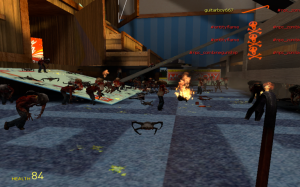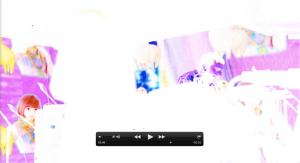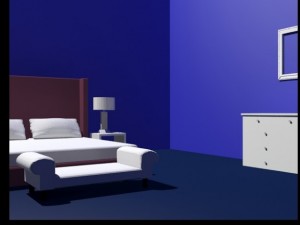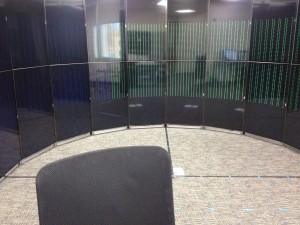Our final video can be found here: http://youtu.be/xnb6tI_ggXw
Category Archives: Projects
Team VEX Final
1. What is our project and how does it work:
We created three Garry’s Mod gamemodes. They are a Hidden in Plain Sight mode, Zombie Survival mode, and a Team Fight mode. All of the modes are written in Lua using Garry’s Mod functionality.
Our game modes can be viewed at : http://youtu.be/1qPHmMA1EAc
Hidden in Plain Sight:
There are two possible goals here. One is that you find the other player and kill them. The catch is that the other player looks just like the other NPCs in the map and finding them is a challenge. The other goal is for one of the player to try to kill all of the NPCs and the other player to determine who the murderer is.
Zombie Survival mode:
There are two different goals here as well. In one map you are just trying to kill all of the zombies. In the other map, the map with a lighthouse, you are trying to escape the zombies by getting to the base at the top of the lighthouse. By reaching this base you summon a helicopter that is supposed to take you away. In this game mode the zombies drop weapons, ammo, and health items that will help the players further kill more zombies.
Team Fight mode:
Here we have the players using NPCs as their own personal army. The NPCs start at opposite ends of the map, and each side is already part of a player’s army. You can convert NPCs by shooting them with the pistol. This means you can steal NPCs away from the other player. There isn’t a set goal here, but it is a fun mode to play.
2. Each Team member’s role and contributions:
We all worked on pretty much everything. There were no set roles. Everyone had to set up the Tridef software to run Garry’s Mod with.
Cory: Cory did extensive research on Garry’s Mod and gamemode creation. He tested the Oculus Rift compatibility with Garry’s Mod, eventually settling on using Tridef 3D Ignition software to use the Oculus Rift. Cory worked on various things for playing the game in multiplayer and players and NPCs using weapons. He spent a lot of time programming NPC behavior. This included making them act randomly, react to getting shot at, and making the NPC and players look like each other. He also did a lot of work on minor issues with Garry’s Mod, like how to remove the info about a player that is shown when you target that player. Cory focused on the Hidden in Plain Sight and Team Fight modes.
Jacob: Jacob came up with most of the different game modes that we decided between. Jacob did research on Portal maps and Unity programming to help decide which platform we should program in. This included creating Portal maps to test, creating Portals in Unity, and setting up a Unity example of an online FPS. He also did a lot of research into creating portal zones in Garry’s Mod, but we did not end up using those. Jacob also worked with NPC interactions, including having the NPCs drop items and having the NPCs like you. He also did a lot of work with additional maps for the zombie mode and overall balance issues with the zombie mode. Jacob focused mainly on the Zombie mode, but helped with all three.
Giang: Giang also did research on Portal maps as an option for creating our levels. He was able to create maps for Portal, but we did not end up using these. he looked into gamemode creation like Cory and Jacob did. He looked into how to create a base system to use for goals in the zombie game mode. This was used for one of the maps in the zombie game mode. He was also able to get another computer that lets us demo. Giang focused mainly on the Zombie mode, but helped with the Hidden in Plain Sight mode.
3. How do we feel about the project:
We are pretty happy about the final product we have produced. We would rather a few more things were refined, but overall we are happy with what we have.
4. Largest hurdles:
We discovered that portals were difficult to implement in Garry’s Mod. Making transparent portals is next to impossible. We overcame this by removing the portal element from our gamemodes.
The Garry’s Mod documentation is pretty poor. We had to rely heavily on how other peopel wrote code to solve their issues. A lot of the time we just had to test thigns and see what they did. Also, the Facepunch forums proved very useful to answering some small questions.
NPC behavior is inconsistent. Some of the NPCs act as you expect them too. Several NPC things have been deprecated, but the documentation is not properly updated to reflect this. This resulted in us going around in circles for a while. Eventually we worked out all of the isssues with NPCs.
The Tridef 3D Ignition is limited to Microsoft Windows operating systems. We need this software to use the Oculus Rift with Garry’s Mod. We solved this by limiting the demo computers to Windows only computers.
The class period is not long enough to accomplish things in, especially since we do a stand-up beforehand. We were often left with only 20 or 30 minutes in class, which is not really enough time to do things in class.
5. Did our project meet our original description and goals?
Our general goal was just to have two people in an environment using the Oculus Rift. We have accomplished this goal. However, the details have changed significantly since the project began. Initially we were going to create a game where the two players chased each other using Portals to make obstacles. We completely moved away from this and made the gamemodes described before.
6. What else would we do if we had more time?
We would probably add some UI elements to make the goals of the game more clear. This includes a waiting room system for when the game starts to allow other players to connect and play without anything happening beforehand. Also, this would include an automatic win condition and resetting the game back to the initial state being programmed in.
We would add more maps to the gamemodes. Right now we only have a few different maps.
I would probably try to create more customized NPCs so that I have better control of what each NPC does.
Music Visual Final Post
1. For our project we developed a music visualizer to the song ‘Hack’ by Sam Armus. The experience is immersive, taking advantage of virtual reality to surround the user with the visualizations. The program combines recorded video with a basic spectrum analyzer generated from any music file the user chooses. The video files are played using the video object code provided by Kevin. The music analysis is done using Fmod. The visuals are generated using the spectrum data and drawn using OpenGL. The rest of the program is based on the default Discover system code.
The project uses the Discover system to make a music visualizer that uses the design of the system to create a 180-degree viewing field of the visualization. In the center of the screen, columns of squares represent the different frequencies, and the longer the column, the more prominent that frequency.
In addition to the spectrum we created a custom video for the track we selected, making this project more specific to a certain song. The video compilation is live footage from shows at Moogfest 2014. We played around with the coloring of the video, inverting the spectrum at certain points to create a more immersive environment for the users.
2. Simon’s role on the project was to code up the program, including the graphical elements. This involved learning basics of OpenGL and adapting some Fmod tutorial code to work with the rest of our program. I also helped come up with concepts for what the program would do near the start of the project.
Tim mainly dealt with trying to find different aspects of the song to analyze. He found a potential program to use, and while it had a lot of potential and options for us, in the end the program wasn’t exactly what we were looking for. Other than this, he helped brainstorm ideas for the visualization at the beginning of the project.
Chelsi took live footage for the video and compiled them for the background of the visualizer. The video was created with iMovie, utilizing the filters and transitions within the program to create something that encompassed the feeling we were trying to get across. The video is approximately 7:30 long, and is separate from the spectrum and music tracking. The video loops at the end, allowing the user to experience the visualizer for as long as they’d like.
3. We are happy about how the project turned out. Many elements of its design turned out to be more complicated than we had hoped, but we had also planned for this and had many simpler ideas to fall back on. OpenGL and the music analysis were the trickiest aspects to successfully implement. The end result we think was not too tricky to design but still is effective in achieving our original goal, to make a cool virtual reality music visualizer.
In addition we think it’s great that we got to incorporate multiple aspects within the visualizer, including the song, spectrum and video. We are extremely happy with how the video turned out, because that was something we were very unsure of at the start. Overall the final product exceeded all of our expectations and we are proud of the end result.
4. Learning how to code things using OpenGL was tricky at first, especially because it was hard to test the code at home. We couldn’t find a good C++ development tool to use on my home computer, and even with one that works it’s necessary to test the code out in the Discover system itself to know if it is effective. The music analysis also took a long time to figure out, but we found an effective method by the end of the project.
We also had a very difficult time trying to understand sonic visualizer, the program we were going to use to analyze the music. We think that it is designed for something more than what we needed, but there were a lot of really interesting features that could have been implemented. However, the program was designed for someone with more background in this area, and the Fmod worked very well as a replacement.
5. The final project did not have as much interactivity as the initial idea, but otherwise I think it remained relatively faithful. We did not have enough time or knowledge to implements music that changes as the user interacts with the virtual scene; additionally, without having the project files for the music we used this would have been even more difficult.
One addition we would have liked to make would be if the user could have moved around in the space, and being in different spaces caused different parts of the song to become more prominent. Also to have a greater variety of shapes within the spectrum, but we are happy to at least have color responses within.
We also had some issues in the beginning of how to start off – none of us had ever worked on a project like this and were hesitant to begin without knowing much about the process. In the end we were all able to find a part in the project and put everything together successfully.
6. With more time, we think making the environment more interactive would be exciting. Additionally, making more different types of visualizers and including more kinds of recorded video and music would give the program much more variety. We would have also liked to implement some of the information we could get from the sonic visualizer, but that would change the way the visualizer was set up significantly. Another plan would be adding more interactivity with movement and audio changes as a result of that movement. There could be some change that happens as a result of a gesture or hand wave.
Overall having more time to pay attention to details and perfect the visualizer more would have been beneficial. We built our time structure off of creating a simple machine and adapting it as time allotted, so there is still the possibility to improve even after our final presentation
Vex 5/9
This week:
Cory – Made the player alyx model look more like the npc model and made it so that you do not see the name of players when you put the cursor on them possibly, but that needs testing.
Giang –
Jacob – Downloaded and played with additional maps. Played around with the balance of the zombie gamemode.
Accomplishments:
We worked together to test multiplayer within class Wednesday and it worked well.
Problems:
Having a the gun sights over a character will reveal if the character is an npc or person.
Also, Making an NPC like you does not seem to mean that they will defend you. This may affect the Player vs Player Armies mode.
Still on schedule?
We plan on testing multiplayer with the Rift in class today. If that works then we are on time. If it does not then we are behind schedule.
Plans for next week:
Group – Get the Rift system working on multiple computers
Cory – Look into Team creation for the Player vs Player Armies mode. Currently, every player and NPC is independent of each other.
Jacob – Create maps for the different game modes. THis means setting the spawn points for the zombies for a specific map. Make sure Tridef 3D Ignition software works correctly on his computer.
Giang – Make sure Tridef 3D Ignition Software works correctly on his computer.
Music Team week of 5/8
This picture is a part of the video that we have playing in the background of the music visualizer.
Chelsi: For this week I complied live video footage to run behind our visualizer. I also researched stereo systems/wireless headphone for the system.
Simon: This week I refined the spectrum analyzer, added beat detection, and combined the video player code with our project code (which mostly works).
Timmy: This week I looked into some more information with textures, but we decided that we didn’t need anything more complicated than what we had. Also, I helped out with demoing the spectrum visualizer as well as brainstorming any ideas for the visualization.
We had a few problems getting the video and the music visualizer to run at the same time. Currently the program will freeze up, but the audio will continue to play.
We currently are close to on schedule, probably a workday or two behind at the most. For Monday our plan is to get everything running smoothing and to ensure the video, audio, and music visualizer are properly synced up.
Vex 5/2
This week:
Cory – Programmed NPCs to walk or run around to random locations. Created simple teleporting functionality. Other small things for the Reverse Turing Test.
Giang – Looked into and created a base system we can use for goal platform in the Zombie co-op mode.
Jacob – Looked into and implemented having the NPCs drop weapons and health items. Also started to look into the Love Crowbar, which makes NPCs like you.
Accomplishments:
We created all of the base pieces for the Zombie Co-op and Reverse Turing Test modes. Only need to combine them and tweak things to get them how we want.
Problems:
The models that NPCs use are not always the same as the one that we can load for players. There are subtle differences like a differently colored jacket or an extra item on the NPC’s belt. Choosing the NPC models for the Reverse Turing Test mode may be difficult if this problem is present on most NPCs.
Also, Making an NPC like you does not seem to mean that they will defend you. This may affect the Player vs Player Armies mode.
Still on schedule?
I think we’ve done a good job of catching up this week. Probably still a week behind, but we gave ourselves an extra week at the beginning to account for that.
Plans for next week:
Group – Testing Multiplayer support. Combining different elements to construct each Gamemode. We at least want to have one of the gamemodes completed in the next few days. Work on a goal system.
Cory – Look into Team creation for the Player vs Player Armies mode. Currently, every player and NPC is independent of each other. Possibly help create a Menu system for starting games.
Jacob – Keep looking into implementing a “Love Weapon” for the Player vs Player Armies setup. Make sure Tridef 3D Ignition software works correctly on his computer.
Giang – Make sure Tridef 3D Ignition Software works correctly on his computer. Possibly help create a Menu system for starting games.
Music Team 5/2
 Simon: This week, with some help I got Fmod to work in the Discover system. The simulation now plays music and has a basic spectrum visualizer working.
Simon: This week, with some help I got Fmod to work in the Discover system. The simulation now plays music and has a basic spectrum visualizer working.
Tim: I looked at the code for the texture packs.
Chelsi: I got video coverage and started to compile which videos we will alternate through in the video.
Accomplishments: This week we got the music analysis to work in real time. Also, we now have video footage to play in the background of the simulation. The model is simple now but can be made more complex later.
Problems: Everything actually went pretty smoothly this week. Learning textures in OpenGL is still challenging but otherwise mostly everything we want to do is implemented successfully.
Schedule: We are on schedule now that the music analyzer is working. Until class is over we will update what we have to make it fancier.
Next week: Put the video in the simulation, and add more details to the visualizer.
RRCP 4/25
Rapid Room Color Prototyping 4/25
Caroline: Worked collectively in 3DS Max to implement lighting into the room. Was instrumental in pushing forward the IRB-which is on its way to being completed soon.
Soheyla: Used prior knowledge of 3DS Max to implement lighting into the room.
Olivia: Finished modeling the virtual room in Sketch Up, and exported to 3DS Max for lighting. Tried to help with lighting.
Accomplishments: This week, we made great strides by solidifying the fundamentals of our experiment i.e. room design/modeling. As a group, we worked together in wording the experiment in the IRB, and incorporating lighting and color into the models.
Problems: The main thing we need to make sure of is that the rooms have realistic lighting with correct coloring-this will take some tweaking in 3DS Max to produce our different colored rooms at different saturations.
Schedule: We are feeling ok on where we are right now. There are elements of the experiment that definitely need to be finalized, but we know what those are and are working through those details.
Next week: Submit IRB, complete all of the room prototypes with lighting, have survey complete, mock experiment/test all of the rooms
Music Team 4/25
Simon: This week I coded some new shapes into the virtual environment and worked on different ways to change the colors and shapes. I also investigated some ways to use OpenAL in our program.
Tim: This week I have been trying to find a way to export data from a spectrogram of the song into a CSV. However I haven’t been able to find anything on the currentprogram that I am using. I tried unsuccessfully to find another program for the job. Next week I plan on finding more information about sonic visualizer and other
music analyzation software.
Chelsi: Chelsi is gone this week but is researching what type of sound system to get for our experiment. She also got some good background footage to use and is getting more this week.
Accomplishments this week: This week we implemented some more prototype environments and did color testing. Additionally, we tested some more music analysis features and decided on how we want to play recorded video in the environment.
Problems: The methods we have found for music analysis so far don’t really work. We still need to find a good program to use.
Schedule: We are behind schedule because the music features have yet to be implemented. All the other major parts of our program are mostly working.
Next week: Implement recorded video and some form of music analysis.
Vex 4/25
 This week:
This week:
Cory – Looked into programming NPC behavior.
Giang – Brainstorming gamemode ideas to branch the game into.
Jacob – Brainstorming gamemode ideas to branch the game into.
Accomplishments:
We changed what kind of game we’ll be making. We came up with several game ideas, and we expect to be able to implement many of them.
- Zombie Co-op survival mode
- Defend each other
- Look for and collect weapons and ammo
- Work toward a specific location
- Reverse Turing Test with NPCs
- Trying to kill other real humans
- Get NPCs to fight each other
- NPCs are reactive to attacks and other actions
- Body swaps
- Player vs player armies
- Recruit NPCs to your army
- Take out the other army
Problems:
Garry’s Mod documentation isn’t the greatest. Often have to test things to see what certain functions do.
Still on schedule?
We’ve changed exactly what we’ll be doing, so the schedule is a little off. However, we think we’ll have things ready in time still.
Plans for next week:
Cory – More NPC interactions. Specifically, programmed walking around and using items. Also, looking into the multiplayer issues.
Ghiang – Look into goal conditions trying to locate a platform to get to
Jacob – Look into placing items or having NPCs drop items






